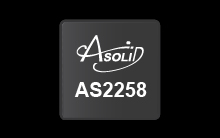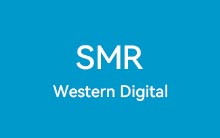VMDK Specs Virtual Disk Format 1.0 1.1 5.0三个版本的VMDK格式说明文档(英文官方原版)
以下是VMware虚拟磁盘VMDK格式说明书1.1— 8.Glossary词汇表
The following terms are used in describing VMware virtual disks.
以下术语用于描述VMware虚拟磁盘。
Chain ——— A collection of disk links that can be accessed as a single entity.
链接 – 可以作为单个实体访问的磁盘链接的集合。
Child disk ——— A disk link in a disk chain that has a parent link.
子磁盘– 具有父链接的磁盘链中的磁盘链接
Delta link——— A link made of one or more sparse extents. It is a difference link, a child of a parent link. It contains only data that the guest operating system has written to the disk after the creation of the delta link. It allows VMware software to go back in time and restore the content of the disk to the state that existed immediately before the creation of the delta link by simply removing the delta link. Some product documentation refers to delta links as redo-log files.
增量链接 —一个由一个或多个稀疏盘区组成的链接。这是一个差异链接,一个父链接的子链。它仅包含在创建delta链接后客户机操作系统已写入磁盘的数据。它允许VMware软件及时恢复,并通过简单地删除增量链接将磁盘内容恢复到在创建增量链接之前立即存在的状态。一些产品文档将增量链接称为重做日志文件。
Descriptor ——— The data about the disk abstraction such as total space or an extent list. The descriptor may be in a separate file or embedded in the header of a sparse extent. An embedded disk descriptor is embedded into the first extent of a disk link rather than put in a separate disk descriptor file. An embedded disk descriptor can be used only when the first extent of a link is sparse.
描述符 — 关于磁盘抽象的数据,如总空间或扩展列表。描述符可以在一个单独的文件中,也可以嵌入稀疏盘区的头文件中。嵌入式磁盘描述符嵌入到磁盘链接的第一个扩展区中,而不是放在单独的磁盘描述符文件中。嵌入式磁盘描述符只能在链路的第一个盘区稀疏时使用。
Disk ——— A disk chain that appears to the guest operating system to be a single physical disk.
磁盘 – 在客户机操作系统中显示为一个物理磁盘的磁盘链。
Disk database ——— A name-value pair text database found in the disk descriptor. The disk database contains information that the disk library does not need for functionality. Examples of these kinds of values are virtual hardware version and VMware Tools version.
磁盘数据库 – 磁盘描述符中的名称 – 值对文本数据库。磁盘数据库包含磁盘库不需要功能的信息。这些值的示例是虚拟硬件版本和VMware Tools版本。
Extent ——— A region of a disk link backed by a region of a file or device. An extent can be sparse, flat, or device. An extent does not have notions of disk properties but acts purely as storage of a certain size. A flat extent is an extent backed by a flat file. Flat extents are sometimes referred to as plain or preallocated. A sparse extent is an extent that does not allocate its data storage space in advance, but allocates as it goes along. A sparse extent also keeps track of whether or not data is represented in the extent. Sparse extents are sometimes referred to as growable.
范围 – 由文件或设备的区域支持的磁盘链接的区域。一个盘区可以是稀疏,平坦或装置。一个盘区没有磁盘属性的概念,但纯粹作为一定大小的存储。平坦的盘区是由平面文件支撑的范围。平坦的区域有时被称为平原或预分配。稀疏范围是不提前分配其数据存储空间的范围,但是随着它的分配。稀疏盘区还跟踪数据是否在盘区内表示。稀疏盘区有时被称为可生长的。
Grain ——— A block of sectors containing data for the virtual machine’s disk. Granularity defines the size of a grain. Each grain table entry points to one grain.
粒 – 包含虚拟机数据的扇区块。颗粒度定义了颗粒的大小。每个粒表项指向一个粒。
Granularity ——— The size of a single grain in a sparse extent.
Grain directory ——— Metadata identifying the locations of grain tables. It is ignored by more recent VMware programs because the grain table is allocated in advance.
粒目录 – 识别粒表的位置的元数据。 由于更新的VMware程序,因为提前分配了粒表,因此它将被忽略。
Grain table ——— Metadata identifying the locations of grains.
粒表 – 识别粒位置的元数据。
Link ——— A single node in a disk chain. A link consists of one or more extents.
链接 – 磁盘链中的单个节点。链接由一个或多个扩展区组成。
Parent link——— A link that has a child. A parent may also have a parent itself.
父链接 — 有一个子链的链接。 父链接也可以拥有它自己的父链接。

 底层数据恢复网
底层数据恢复网












评论前必须登录!
注册